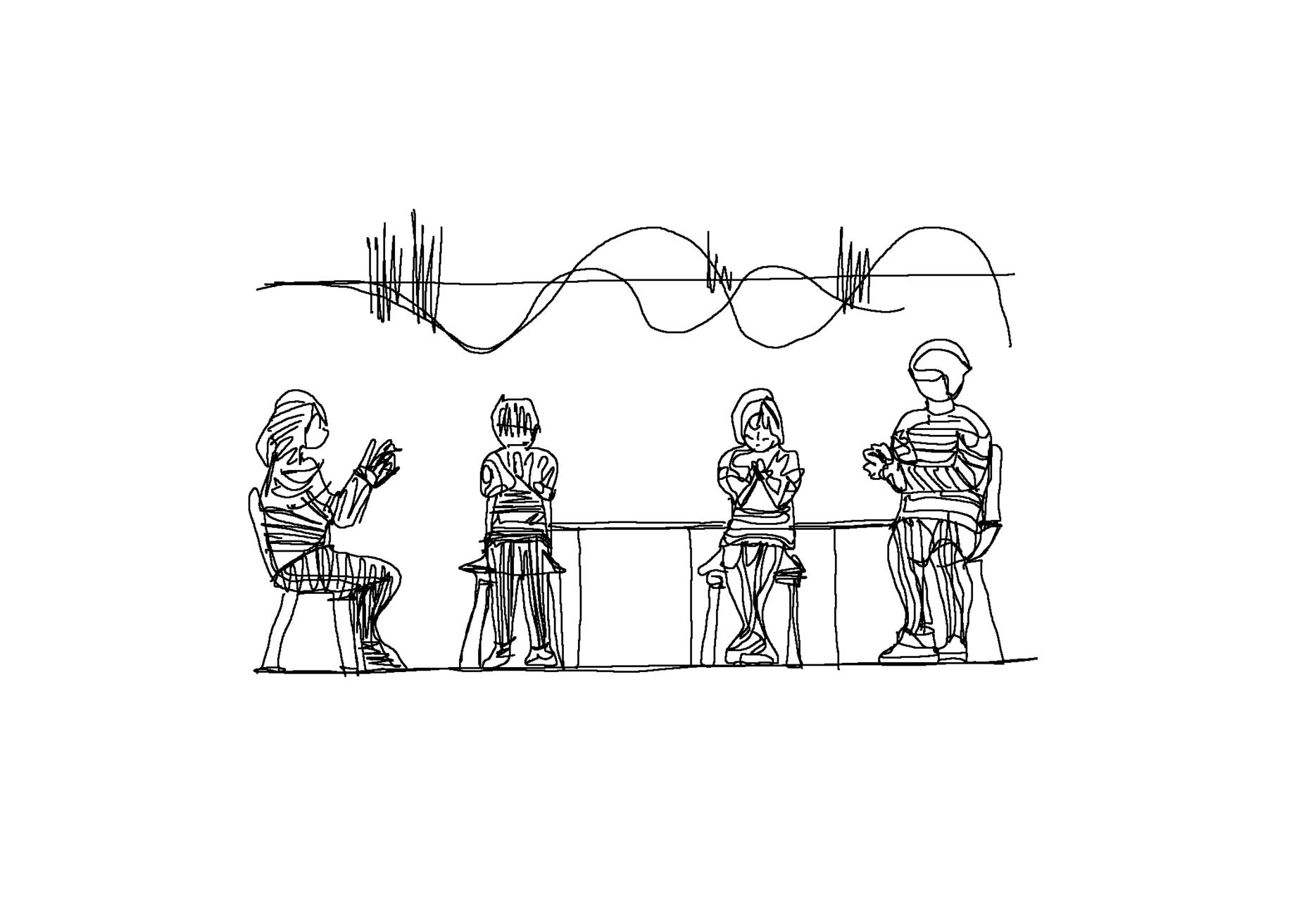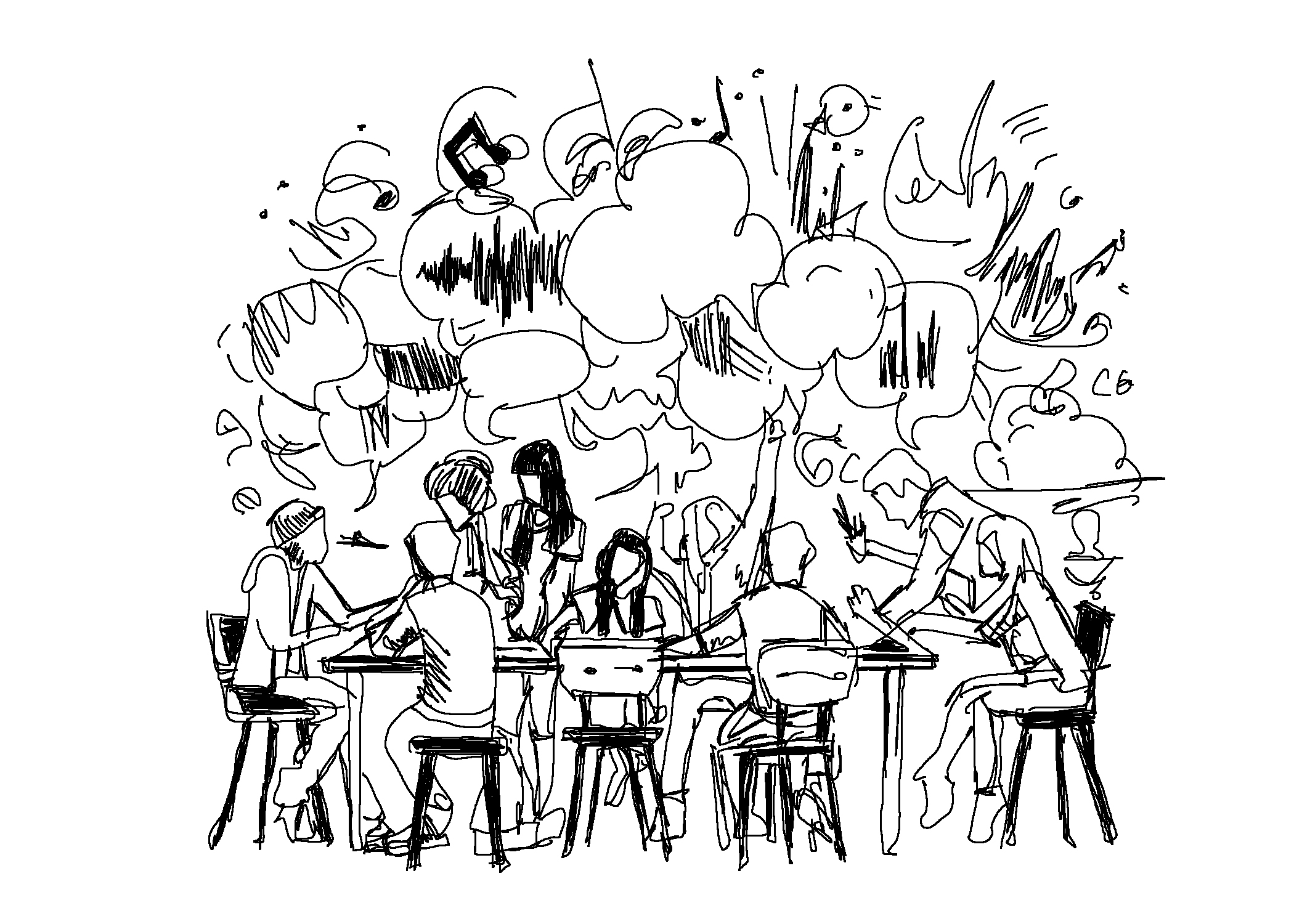Background Noise as Talk
We often associate noise as unwanted or disruptive sound, characterized by its irregularity, unfamiliarity, lack of coherence, or interference. One might perceive noise as an intrusion or disturbance in their auditory experiences. However, it is important to note that the categorization of sound as noise can be subjective and context-dependent.
With this portion of the work, I invite the reader to embrace the diversity of sonic experiences and consider the profound role that noise can play in shaping our understanding of the world and our modes of interaction within it.
Noise as talk, in particular to the Saturday Art School, refers to the idea that seemingly chaotic or nonsensical sounds or voices can carry meaning and be interpreted as communication in artistic contexts. It challenges the traditional notions of coherent speech, acknowledging the expressive possibilities that lie within the disordered forms of vocalization.
There is constant talk between students.
Good talk.
They are talking about their personal art projects and the class activities,
that they will be doing during summer.
They talk about almost everything and all about art.
Although Douglas Kahn (1999) characterized noise as an entity of otherness, a distinction that deviates from conventional forms of knowledge and sound within environments. His perspective acknowledges that noise, despite its disruptive or unconventional nature, possesses communicative qualities. He suggests that noise holds the power to convey messages, evoke responses, and participate in the intricate web of human interaction.
Their voices are growing.
A collective sound is happening.
A student uses her cellphone for a collaborative project, watching a video.
The sounds of the video mixes with the other noises in the room.
Students are searching for pictures of figures on the internet,
looking for images of an eye, and figure drawings.
Two students are highly engaged in their talk,
and eventually decide to work on their sculpture together—
a group work is happening.
Their talk about the sculpture is thriving.
In my theory of "noise as talk", I propose that the boundaries between noise and talk are fluid and interchangeable. This theory asserts that noise can function as a form of talk, and conversely, talk can function as noise. Through my observations and analyses of students' art-making processes, I have found that the transcriptions of their verbal interactions often appear as noise, challenging traditional notions of structured communication. However, within this seemingly chaotic soundscape, there exists a profoundly significant and culturally relevant production of art.
The transformative power lies in the recognition that what may be considered noise in one context can serve as a meaningful form of communication in the realm of artmaking. With this perspective, we might acknowledge the complex and dynamic interplay between noise and talk, highlighting the potential for creative expression that emerges when these seemingly disparate elements merge together.
During the group conversations and talks, each student seemed excited and motivated. Perhaps, the sound of the clapping was perceived as applause to students. We could all identify the sound of it as a meaningful association towards their completed artworks.
Another student is engrossed in their sketchbook, drawing incessantly.
The sound of the marker is evident on paper.
Within the frame of background noise as talk, sound and noise emerge as fundemental components in the realm of communication, bridging the gap between diverse experiences and enabling the exchange of ideas and emotions. While noise may defy traditional structures or defy comprehension, it also carries the potential to disrupt established patterns and challange normative modes of communication.

